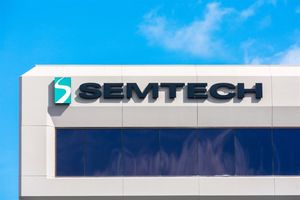Financial News
The AI Supercycle: Billions Pour into Semiconductors as the Foundation of Future AI Takes Shape

The global semiconductor industry is in the midst of an unprecedented investment boom, fueled by the insatiable demand for Artificial Intelligence (AI) and high-performance computing (HPC). Leading up to October 2025, venture capital and corporate investments are pouring billions into advanced chip development, manufacturing, and innovative packaging solutions. This surge is not merely a cyclical upturn but a fundamental restructuring of the tech landscape, as the world recognizes semiconductors as the indispensable backbone of the burgeoning AI era.
This intense capital infusion is driving a new wave of innovation, pushing the boundaries of what's possible in AI. From specialized AI accelerators to advanced manufacturing techniques, every facet of the semiconductor ecosystem is being optimized to meet the escalating computational demands of generative AI, large language models, and autonomous systems. The immediate significance lies in the accelerated pace of AI development and deployment, but also in the geopolitical realignment of supply chains as nations vie for technological sovereignty.
Unpacking the Innovation: Where Billions Are Forging Future AI Hardware
The current investment deluge into semiconductors is not indiscriminate; it's strategically targeting key areas of innovation that promise to unlock the next generation of AI capabilities. The global semiconductor market is projected to reach approximately $697 billion in 2025, with a significant portion dedicated to AI-specific advancements.
A primary beneficiary is AI Chips themselves, encompassing Graphics Processing Units (GPUs), specialized AI accelerators, and Application-Specific Integrated Circuits (ASICs). The AI chip market, valued at $14.9 billion in 2024, is projected to reach $194.9 billion by 2030, reflecting the relentless drive for more efficient and powerful AI processing. Companies like NVIDIA (NASDAQ: NVDA) continue to dominate the AI GPU market, while Intel (NASDAQ: INTC) and Google (NASDAQ: GOOGL) (with its TPUs) are making significant strides. Investments are flowing into customizable RISC-V-based applications, chiplets, and photonic integrated circuits (ICs), indicating a move towards highly specialized and energy-efficient AI hardware.
Advanced Packaging has emerged as a critical innovation frontier. As traditional transistor scaling (Moore's Law) faces physical limits, techniques like chiplets, 2.5D, and 3D packaging are revolutionizing how chips are designed and integrated. This modular approach allows for the interconnection of multiple, specialized dies within a single package, enhancing performance, improving manufacturing yield, and reducing costs. TSMC (NYSE: TSM), for example, utilizes its CoWoS-L (Chip on Wafer on Substrate – Large) technology for NVIDIA's Blackwell AI chip, showcasing the pivotal role of advanced packaging in high-performance AI. These methods fundamentally differ from monolithic designs by enabling heterogeneous integration, where different components can be optimized independently and then combined for superior system-level performance.
Further technical advancements attracting investment include new transistor architectures like Gate-All-Around (GAA) transistors, which offer superior current control for sub-nanometer scale chips, and backside power delivery, which improves efficiency by separating power and signal networks. Wide Bandgap (WBG) semiconductors like Silicon Carbide (SiC) and Gallium Nitride (GaN) are gaining traction for power electronics due crucial for energy-hungry AI data centers and electric vehicles. These materials surpass silicon in high-power, high-frequency applications. Moreover, High Bandwidth Memory (HBM) customization is seeing explosive growth, with demand from AI applications driving a 200% increase in 2024 and an expected 70% increase in 2025 from players like Samsung (KRX: 005930), Micron (NASDAQ: MU), and SK Hynix (KRX: 000660). These innovations collectively mark a paradigm shift, moving beyond simple transistor miniaturization to a more holistic, system-centric design philosophy.
Reshaping the AI Landscape: Corporate Giants, Nimble Startups, and Competitive Dynamics
The current semiconductor investment trends are fundamentally reshaping the competitive landscape for AI companies, tech giants, and startups alike. The race for AI dominance is driving unprecedented demand for advanced chips, creating both immense opportunities and significant strategic challenges.
Tech giants such as Google (NASDAQ: GOOGL), Amazon (NASDAQ: AMZN), Microsoft (NASDAQ: MSFT), and Meta (NASDAQ: META) are at the forefront, heavily investing in their own custom AI chips (ASICs) to reduce dependency on third-party suppliers and gain a competitive edge. Google's TPUs, Amazon's Graviton and Trainium, and Apple's (NASDAQ: AAPL) ACDC initiative are prime examples of this trend, allowing these companies to tailor hardware precisely to their software needs, optimize performance, and control long-term costs. They are also pouring capital into hyperscale data centers, driving innovations in energy efficiency and data center architecture, with OpenAI reportedly partnering with Broadcom (NASDAQ: AVGO) to co-develop custom chips.
For established semiconductor players, this surge translates into substantial growth. NVIDIA (NASDAQ: NVDA) remains a dominant force, nearly doubling its brand value in 2025, driven by demand for its GPUs and the robust CUDA software ecosystem. TSMC (NYSE: TSM), as the world's largest contract chip manufacturer, is a critical beneficiary, fabricating advanced chips for most leading AI companies. AMD (NASDAQ: AMD) is also a significant competitor, expanding its presence in AI and data center chips. Memory manufacturers like Samsung (KRX: 005930), SK Hynix (KRX: 000660), and Micron (NASDAQ: MU) are directly benefiting from the surging demand for HBM. ASML (NASDAQ: ASML), with its near-monopoly in EUV lithography, is indispensable for manufacturing these cutting-edge chips.
AI startups face a dual reality. While cloud-based design tools are lowering barriers to entry, enabling faster and cheaper chip development, the sheer cost of developing a leading-edge chip (often exceeding $100 million and taking years) remains a formidable challenge. Access to advanced manufacturing capacity, like TSMC's advanced nodes and CoWoS packaging, is often limited and costly, primarily serving the largest customers. Startups are finding niches by providing specialized chips for enterprise needs or innovative power delivery solutions, but the benefits of AI-driven growth are largely concentrated among a handful of key suppliers, meaning the top 5% of companies generated all the industry's economic profit in 2024. This trend underscores the competitive implications: while NVIDIA's ecosystem provides a strong moat, the rise of custom ASICs from tech giants and advancements from AMD and Intel (NASDAQ: INTC) are diversifying the AI chip ecosystem.
A New Era: Broader Significance and Geopolitical Chessboard
The current semiconductor investment trends represent a pivotal moment in the broader AI landscape, with profound implications for the global tech industry, potential concerns, and striking comparisons to previous technological milestones. This is not merely an economic boom; it is a strategic repositioning of global power and a redefinition of technological progress.
The influx of investment is accelerating innovation across the board. Advancements in AI are driving the development of next-generation chips, and in turn, more powerful semiconductors are unlocking entirely new capabilities for AI in autonomous systems, healthcare, and finance. This symbiotic relationship has elevated the AI chip market from a niche to a "structural shift with trillion-dollar implications," now accounting for over 20% of global chip sales. This has led to a reorientation of major chipmakers like TSMC (NYSE: TSM) towards High-Performance Computing (HPC) and AI infrastructure, moving away from traditional segments like smartphones. By 2025, half of all personal computers are expected to feature Neural Processing Units (NPUs), integrating AI directly into everyday devices.
However, this boom comes with significant concerns. The semiconductor supply chain remains highly complex and vulnerable, with advanced chip manufacturing concentrated in a few regions, notably Taiwan. Geopolitical tensions, particularly between the United States and China, have led to export controls and trade restrictions, disrupting traditional free trade models and pushing nations towards technological sovereignty. This "semiconductor tug of war" could lead to a more fragmented global market. A pressing concern is the escalating energy consumption of AI systems; a single ChatGPT query reportedly consumes ten times more electricity than a standard Google search, raising significant questions about global electrical grid strain and environmental impact. The industry also faces a severe global talent shortage, with a projected deficit of 1 million skilled workers by 2030, which could impede innovation and jeopardize leadership positions.
Comparing the current AI investment surge to the dot-com bubble reveals key distinctions. Unlike the speculative nature of many unprofitable internet companies during the late 1990s, today's AI investments are largely funded by highly profitable tech businesses with strong balance sheets. There is a "clear off-ramp" of validated enterprise demand for AI applications in knowledge retrieval, customer service, and healthcare, suggesting a foundation of real economic value rather than mere speculation. While AI stocks have seen significant gains, valuations are considered more modest, reflecting sustained profit growth. This boom is fundamentally reshaping the semiconductor market, transitioning it from a historically cyclical industry to one characterized by structural growth, indicating a more enduring transformation.
The Road Ahead: Anticipating Future Developments and Challenges
The semiconductor industry is poised for continuous, transformative developments, driven by relentless innovation and sustained investment. Both near-term (through 2025) and long-term (beyond 2025) outlooks point to an era of unprecedented growth and technological breakthroughs, albeit with significant challenges to navigate.
In the near term, through 2025, AI will remain the most important revenue driver. NVIDIA (NASDAQ: NVDA), Intel (NASDAQ: INTC), and AMD (NASDAQ: AMD) will continue to lead in designing AI-focused processors. The market for generative AI chips alone is forecasted to exceed $150 billion in 2025. High-Bandwidth Memory (HBM) will see continued demand and investment, projected to account for 4.1% of the global semiconductor market by 2028. Advanced packaging processes, like 3D integration, will become even more crucial for improving chip performance, while Extreme Ultraviolet (EUV) lithography will enable smaller, faster, and more energy-efficient chips. Geopolitical tensions will accelerate onshore investments, with over half a trillion dollars announced in private-sector investments in the U.S. alone to revitalize its chip ecosystem.
Looking further ahead, beyond 2025, the global semiconductor market is expected to reach $1 trillion by 2030, potentially doubling to $2 trillion by 2040. Emerging technologies like neuromorphic designs, which mimic the human brain, and quantum computing, leveraging qubits for vastly superior processing, will see accelerated development. New materials such as Silicon Carbide (SiC) and Gallium Nitride (GaN) will become standard for power electronics due to their superior efficiency, while materials like graphene and black phosphorus are being explored for flexible electronics and advanced sensors. Silicon Photonics, integrating optical communication with silicon chips, will enable ultrafast, energy-efficient data transmission crucial for future cloud and quantum infrastructure. The proliferation of IoT devices, autonomous vehicles, and 6G infrastructure will further drive demand for powerful yet energy-efficient semiconductors.
However, significant challenges loom. Supply chain vulnerabilities due to raw material shortages, logistical obstructions, and ongoing geopolitical friction will continue to impact the industry. Moore's Law is nearing its physical limits, making further miniaturization increasingly difficult and expensive, while the cost of building new fabs continues to rise. The global talent gap, particularly in chip design and manufacturing, remains a critical issue. Furthermore, the immense power demands of AI-driven data centers raise concerns about energy consumption and sustainability, necessitating innovations in hardware design and manufacturing processes. Experts predict a continued dominance of AI as the primary revenue driver, a shift towards specialized AI chips, accelerated investment in R&D, and continued regionalization and diversification of supply chains. Breakthroughs are expected in 3D transistors, gate-all-around (GAA) architectures, and advanced packaging techniques.
The AI Gold Rush: A Transformative Era for Semiconductors
The current investment trends in the semiconductor sector underscore an era of profound transformation, inextricably linked to the rapid advancements in Artificial Intelligence. This period, leading up to and beyond October 2025, represents a critical juncture in AI history, where hardware innovation is not just supporting but actively driving the next generation of AI capabilities.
The key takeaway is the unprecedented scale of capital expenditure, projected to reach $185 billion in 2025, predominantly flowing into advanced nodes, specialized AI chips, and cutting-edge packaging technologies. AI, especially generative AI, is the undisputed catalyst, propelling demand for high-performance computing and memory. This has fostered a symbiotic relationship where AI fuels semiconductor innovation, and in turn, more powerful chips unlock increasingly sophisticated AI applications. The push for regional self-sufficiency, driven by geopolitical concerns, is reshaping global supply chains, leading to significant government incentives and corporate investments in domestic manufacturing.
The significance of this development in AI history cannot be overstated. Semiconductors are the fundamental backbone of AI, enabling the computational power and efficiency required for machine learning and deep learning. The focus on specialized processors like GPUs, TPUs, and ASICs has been pivotal, improving computational efficiency and reducing power consumption, thereby accelerating the AI revolution. The long-term impact will be ubiquitous AI, permeating every facet of life, driven by a continuous innovation cycle where AI increasingly designs its own chips, leading to faster development and the discovery of novel materials. We can expect the accelerated emergence of next-generation architectures like neuromorphic and quantum computing, promising entirely new paradigms for AI processing.
In the coming weeks and months, watch for new product announcements from leading AI chip manufacturers like NVIDIA (NASDAQ: NVDA), AMD (NASDAQ: AMD), and Intel (NASDAQ: INTC), which will set new benchmarks for AI compute power. Strategic partnerships between major AI developers and chipmakers for custom silicon will continue to shape the landscape, alongside the ongoing expansion of AI infrastructure by hyperscalers like Microsoft (NASDAQ: MSFT), Oracle (NYSE: ORCL), Amazon (NASDAQ: AMZN), and Meta (NASDAQ: META). The rollout of new "AI PCs" and advancements in edge AI will indicate broader AI adoption. Crucially, monitor geopolitical developments and their impact on supply chain resilience, with further government incentives and corporate strategies focused on diversifying manufacturing capacity globally. The evolution of high-bandwidth memory (HBM) and open-source hardware initiatives like RISC-V will also be key indicators of future trends. This is a period of intense innovation, strategic competition, and critical technological advancements that will define the capabilities and applications of AI for decades to come.
This content is intended for informational purposes only and represents analysis of current AI developments.
TokenRing AI delivers enterprise-grade solutions for multi-agent AI workflow orchestration, AI-powered development tools, and seamless remote collaboration platforms.
For more information, visit https://www.tokenring.ai/.
More News
View More




Recent Quotes
View More
Quotes delayed at least 20 minutes.
By accessing this page, you agree to the Privacy Policy and Terms Of Service.



